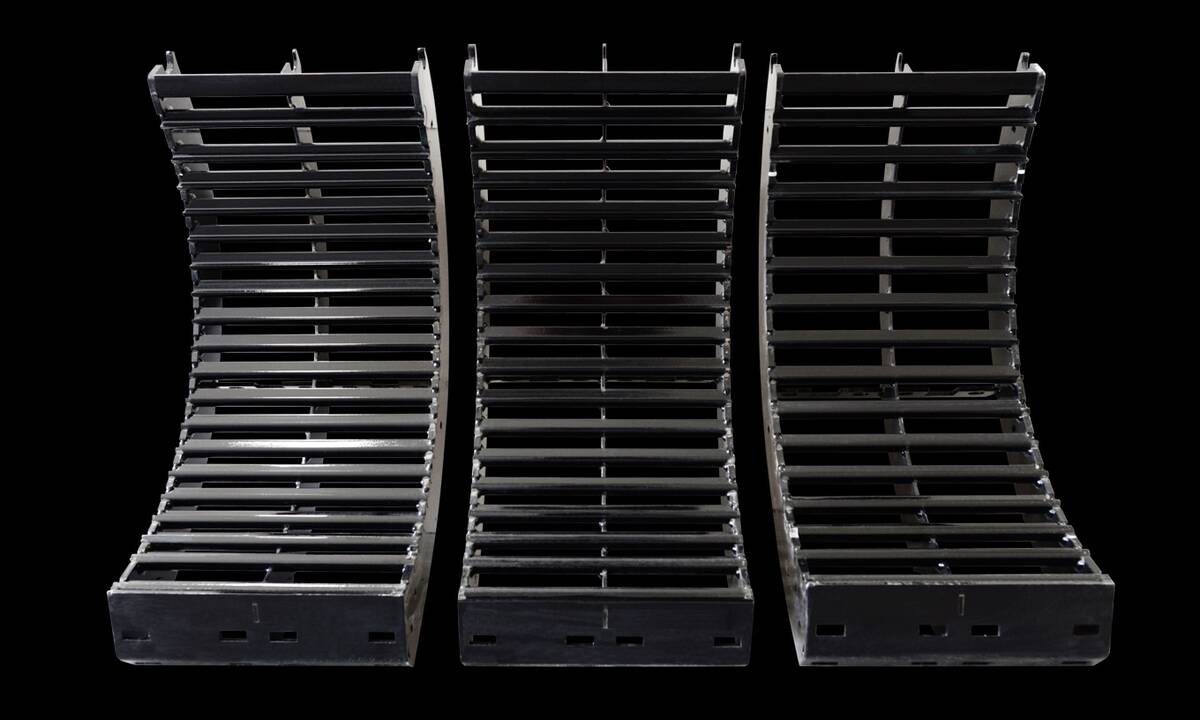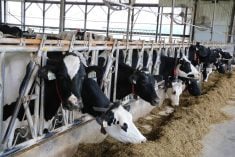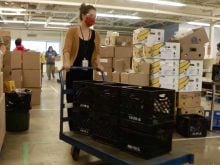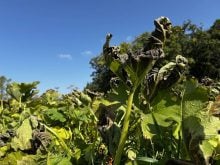Manitoba’s resurgent cases have taken a turn for the rural, just in time for harvest
It’s not hard to socially distance when you’re alone in a combine.
Keystone Agricultural Producers (KAP) president Bill Campbell said he’d been “voluntarily self-isolating” on his farm near Minto — and by that, he meant he’s been stuck inside a swather, combine or tractor.
As harvest has kicked into high gear across the province, the southwest end of Manitoba also moved into “code orange” COVID-19 restrictions as cases of the virus mounted in Brandon and the rest of the Prairie Mountain Health Region. The region stood at 212 active cases as of Aug. 27.
Read Also

MANITOBA AG DAYS 2026: Stacked equipment category expected at Innovation Showcase
Ten of 28 Innovation Showcase entries at the Manitoba Ag Days 2026 farm show Jan. 20-22 in Brandon are in the equipment category.
The province in general has seen a rise in COVID-19 outside of the perimeter. As of Aug. 27, the Prairie Mountain Health Region had double the number of active cases as Winnipeg (which sat at 97 cases). A total 126 of those were in Brandon, but another 52 were in the Asessippi health district, making the very rural area west of Hamiota and north to the Asessippi Provincial Park the third-largest COVID-19 hot spot in the province. Southern Health, meanwhile, had reported 85 active cases, only slightly less than Winnipeg.
In the Prairie Mountain Health Region, masks were mandatory in public places, and allowed gathering sizes dropped to 10 people in most settings.
“I don’t think we’re doing anything different here… (We’re) just making sure that we’re following proper procedures, wearing masks and sanitizing and that, but other than the masks, we’ve sort of been doing that since spring anyways,” said Adam Gurr, who farms just outside Brandon.
He did note, however, that his farm is being, “extra careful doing any activities in the city,” given their proximity to the COVID-19 hot spot.
Clayton Robins, who farms nearby near Rivers, said he’s avoiding any business he doesn’t have to enter. When he has to go into town, he avoids going into stores at the busiest times of day.
“If you don’t have to go in, it’s even better,” he said.
At the same time, he said ag stores seemed to have, “done due diligence,” to make customers feel secure, while those businesses also tend to be less crowded than some other commercial spaces.
“There have been quite a few challenges,” according to Candace Bowles, marketing manager at Mazergroup in Brandon.
“We’re still fixing stuff; we’re still going out in the field,” she said. “We want to make sure we’re still there for our customers.”
It just takes a few more steps, she said. In the store, they’re providing sanitizer and masks for customers, who seem to be taking the restrictions in stride. Field technicians out on repair calls take masks and sanitizer with them. They ask customers not to come into equipment cabs with them — and if they have to enter, to wear a mask.
Explaining equipment issues to technicians while socially distancing has made things a little more complicated, Campbell noted, since verbal instructions sometimes got lost in translation.
“We can still get the job done, it just takes longer,” said Adrien Caillier, president of A.R.K. New-Tech in Manitou.
His company typically sends staff on the road for days at a time to service or install grain-drying and grain-handling systems.
This year, he said, the technicians travelling to farms must go straight from the farm to their hotel and not eat in restaurants.
Rocky Mountain Equipment is also telling technicians they must wear a mask if they can’t maintain a two-metre distance, said Jim Wood, chief sales and operations officer with the company. In the field, they advise customers to keep their distance.
The company set up no-contact “parts drops” at its stores. This saw more use in March, but a percentage of customers still use the service, said Wood.
Wood, Bowles and Caillier said they’d seen no dip in business this year.
Sosefo Gordon, who farms near Franklin, said he’s been making use of contactless service where possible.
“Any reps who are on our farm or in our machines have been wearing masks and sanitizing, and we do our best to do the same around those not in our bubble,” he said.
Gordon said on his farm, workers who feel sick are told to stay home. They avoid carpooling.
“It’s fairly easy to self-isolate in our machines once we get rolling, but we are really hoping we don’t get it,” he said.
In some cases, a case of COVID-19 on a farm could derail harvest.
“Any kind of illness at the wrong time of the year can be devastating for a farm operation,” Robins said. “If somebody came down sick and that when all the hay was ready, it would be a real challenge on trying to get everything done. You’d have to rely on your neighbours to come in and help if they’re able to.”
Now, more than ever, it’s best to have an emergency plan in place, KAP’s Thea Green and Morag Marjerison told Country Guide in May.
Make sure someone can step in to cover if key people on the farm are not available, they said.
Marjerison and Green suggested putting up a whiteboard in the shop with a list of upcoming tasks so, if the farmer or manager falls ill, whoever takes over knows what needs to be done.
Farmers are also advised to have necessary personal protective equipment on hand, if possible. Consider having extra maintenance supplies available. Create a contact list so everyone knows where to order diesel or call for electrical repairs.
Marjerison and Green also suggested, in the case of farms with multiple workers, to assign equipment to a specific worker so they don’t need to worry about sanitizing between tasks.
Campbell said his team of three or four doesn’t need to interact much, but keeping equipment sanitized when moving from task to task can get a bit complicated.
Documentation helps, said Marjerison and Green. If workers share a tractor and the procedure is to sanitize at the beginning and end of every shift, having a log or checklist to show it was done may help everyone feel safer.
Producers might consider grouping workers in teams (or “cohorts”) to reduce risk of spreading the virus to the whole farm. Marjerison and Green asked farmers to consider if everyone needs to go into a building, or if one person can go in and collect the supplies needed for the day.
For jobs where it’s not possible for workers to stay six feet apart, pairing people who stick together all season might also reduce risk.
Farmers should also take care of themselves. Fatigue — a given in harvest time — can affect decision-making and impact safety. Farmers are advised to keep an eye on each other’s mental health, and make some time each day to protect their own — be it a quick walk, nap or a few minutes of meditation.
















